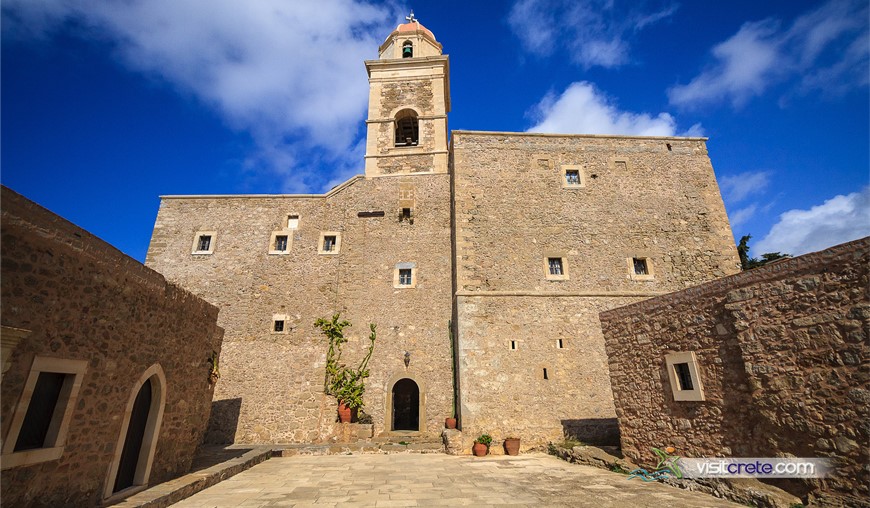 Overview: Overview:
Historical Abbey of the 15th century collapsed from an earthquake in 1612 and re-constructed with the economic aid of the Venetian. It was destroyed and depopulated by the Turks when they conquest Crete. It was changed under the Patriarch’s jurisdiction in 1704. The whole period of Ottoman domination, in the Abbey, there was a school operating, later. The main building, 800 Sq.m, is a three-storey building and includes cells, guest rooms, cook rooms, abbey-priory, storage. The catholic is divided into two parts, with the northern declinable dedicated to Virgin Mary and the southern later declinable in Agios Ioannis (St. John) the Theologian. Characteristic is the bell tower of the Abbey, which has anaglyph crowns and crosses with signs, aged around 1558.
The Museum includes the following collections:
– Collection of Cretan icons
– Collection of graven items
The most important exhibits of the Museum are Virgin Mary the Asbestos-15th century, Christ the Pantocrator-15th century, Agios Ioannis (St. John) the Precursor and scenes of his life-17th century, the Dormition of Virgin Mary-15th century, Virgin Mary the uncontaminated-15th century, Virgin Mary of Passion and Agios Nikolaos (St. Nicolas)-1642, Agios Theodoros (St. Theodore)-1723, the Saint Trinity-17th century, Agios Ignatios and Savvas-17th century, the Agios Athanassios, Cyrille and Agios Ioannis (St. John) the merciful- 17th century.
|











Get Social